The Barn Swallow (Hirundo rustica) is a slender, dark blue and orange swallow with a long, forked tail.
This handsome bird breeds from southern Alaska south to central Mexico. It also lives in Eurasia and North Africa. All Barn Swallows fly south for the winter to tropical regions.
True to its name, the Barn Swallow often nests inside barns and other structures. If you see small birds with long tails quickly gliding and zipping low over a summer field, there’s a good chance they are Barn Swallows.
On this page
Identification
The Barn Swallow is a small, elegant bird around 6.75 inches long and with a wingspan of 15 inches. It weighs .67 ounces, and has a long, elegant forked tail.
Male Barn Swallows are deep, steel-blue above and dark, peach-orange below. They also have dark orange patch above their beak, and a dark orange throat.
Females look like males and weigh about the same but have shorter tails and paler underparts. Some females are so pale below that their bellies and underwings are nearly white.
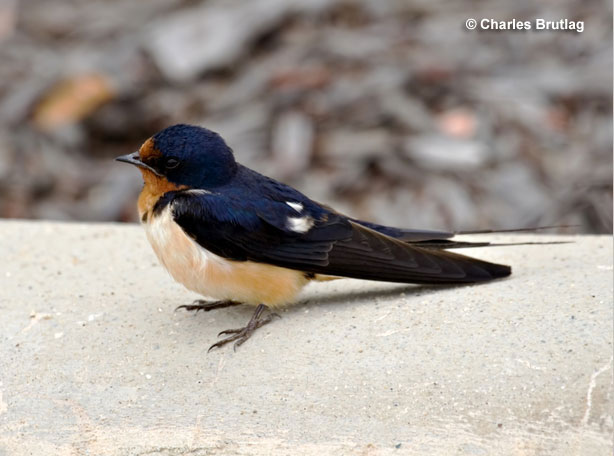
Young Barn Swallows look like females with even shorter tails, underparts that blend in with the color on their throats, and have very little orange color above their beak.
All ages and sexes show a broken white band on their tail when they spread it in flight.
They also all have long, pointed wings that help them fly close to the ground, high overhead, or migrate for thousands of miles. Barn Swallows have quick graceful flight.
Vocalizations
This species also has a short but wide, dark beak. Barn Swallows make a variety of brief calls notes, often one that sounds like, “whit whit”. They sing a complex, long song of rapid, chippering notes and rattles, “whitwhutwhitchipchupchupwhitwhitwhitwitwitwitwhit,trdddle”.
Food
The Barn Swallow feeds on insects. Although some populations in some regions also eat some fruits and seeds, the vast majority of Barn Swallows only eat flying insects.
They catch a variety of bugs in flight and, when there are dead bugs on the ground, can eat those too. However, the insects that make up the biggest part of their diet seem to be flies. They catch a lot of regular flies, Craneflies, Robberflies, and Horseflies. These insectivorous birds also feed on various other flying insects including beetles, damselflies, leafhoppers, wasps, and other species.
Although on rare occasion, they can pick dead insects off the ground, the Barn Swallow catches most of its food in flight.
Barn Swallows forage by flying over fields, water, and other open habitats. Unlike many other swallow species, they usually forage quite low; from three feet to thirty feet above the ground.
This species can also follow domestic animals, other birds, and farm machinery that flush insects out of the grass and into the air. They catch bugs by swiftly flying along and veering to snap up insects with their wide mouths.
This ability to follow animals and machinery makes them an especially common species in farming areas.
Nesting and Eggs
Barn Swallows make a cup nest out of mud and grass. Both sexes help build the nest, although females do more of the work than males. Once the nest is built, they line it with feathers, often using large feathers from chickens.
The Barn Swallow often builds its nest on a wall or a beam with some other structure right overhead. They can also make their mud nests on light fixtures, on mud dauber wasp nests, on rock faces, and other similar situations.
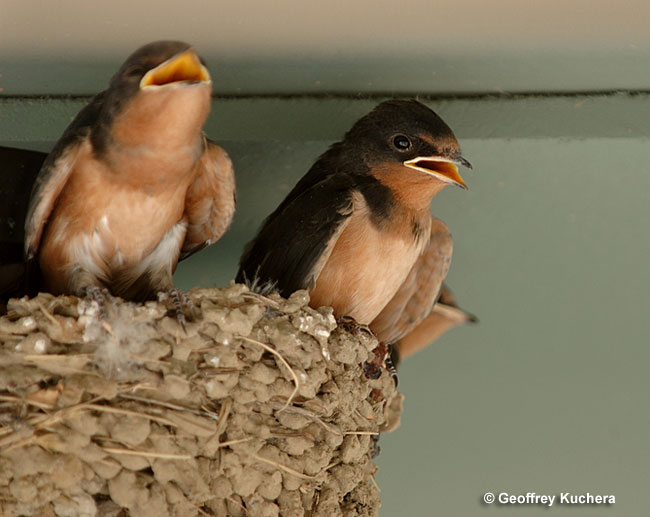
True to their name, they also commonly nest inside barns.
The Barn Swallow usually lays four eggs. They are cream-colored or pinkish, and are patterned with small cinnamon, lilac, or reddish-brown spots. Their eggs weigh .07 ounces and are .76 inches long.
Females do most of the incubation, although males also help a bit. They incubate eggs for 13 to 14 days, and the nestlings stay in the nest for 20 days more.
After leaving the nest, adults lead young Barn Swallows back to the nest to sleep. The young birds often perch on wires and test their wings while adults feed them for a week or so.
The adults bring food to perched young, but they also meet adults in flight to be fed on the wing. After ten days, the young Barn Swallows find food on their own.
Current Situation
The Barn Swallow breeds in areas with open, grassy habitats in much of North America and northern Eurasia. We often see them flying over farm fields, pastures, and many other, open grassy areas.
On migration, they can fly over any habitat but still feed over fields and water. In winter, this species uses similar habitats in tropical areas and can occur in large flocks.
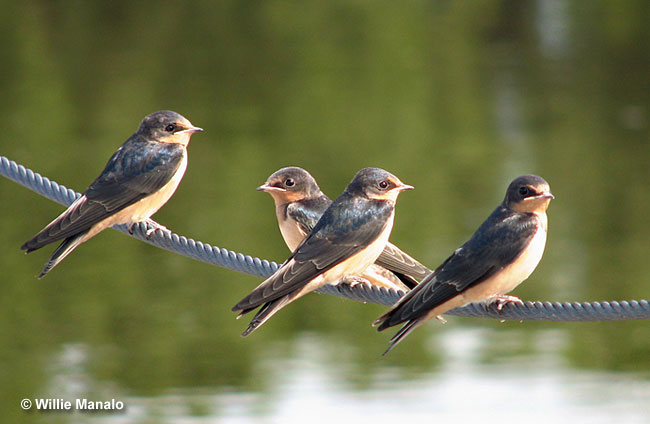
The Barn Swallow is listed as Least Concern in the IUCN Red List. However, in Canada, since this species has declined and may become threatened, it is listed as a species of special concern.
Although the Barn Swallow is not endangered and has a large population, it has declined in many places. Like many other common birds, these declines are related to pesticide use and declines in the insects they need for survival.
Facts
- Barn Swallows don’t visit feeders to eat seeds but might visit a feeder to pick up broken egg shells. Structures like sheds and barns can also attract these birds for nesting.
- Barn Swallows live in more places than any other swallow species. Some have even started nesting in Argentina, a country where they usually spend the winter.
- Although Barn Swallows used to nest in caves, nearly all birds in North America nest on human-made structures. The only Barn Swallows in the USA still known to nest in caves are from a population that lives off the coast of California, on the Channel Islands.
- Sometimes, young birds from previous nesting seasons help feed their sibling Barn Swallows.
- The Barn Swallow often reuses old nests. For this reason, old Barn Swallow nests should be left on structures. They could be reused and, if not, still tend to attract Barn Swallows to the area.
Similar Species
The Barn Swallow is a distinctive, easily recognized bird. No other swallow species in North America has a similar, long, elegant, forked tail. However, some species can look similar.
Cliff Swallow
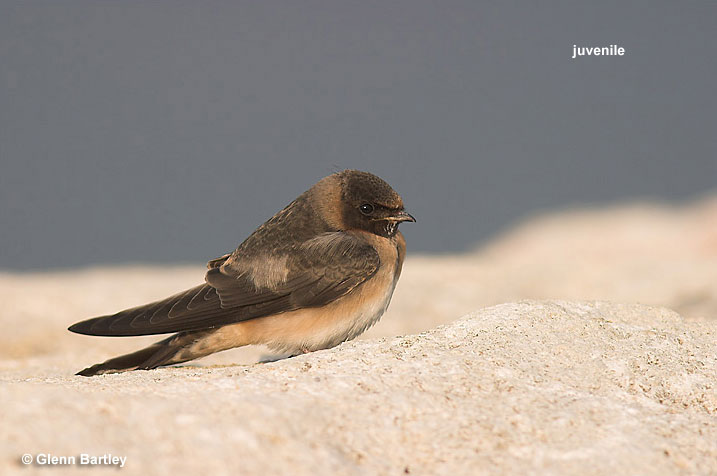
Cliff Swallows have a shorter, squared tail, dark throat, pale spot above its beak, and a pale rump.
Tree Swallow
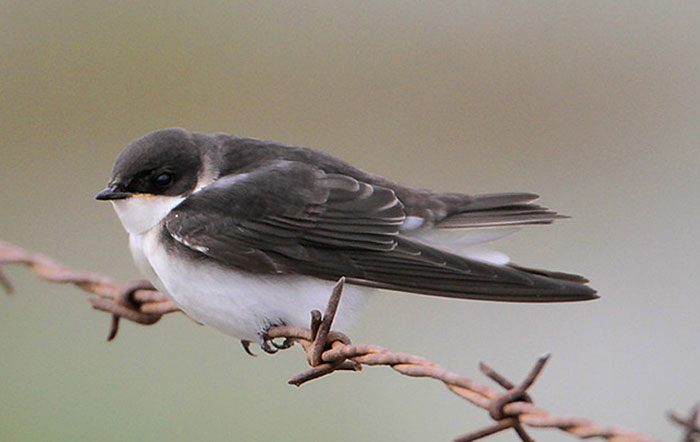
The Tree Swallow is green-blue above, all white below, and has a much shorter, forked tail.
Violet-green Swallow
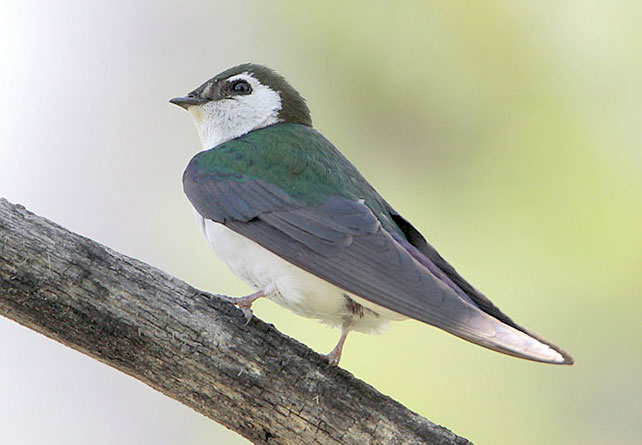
The small Violet-green Swallow also has a short, forked tail but is all white below and has some white on its face.
Bank Swallow
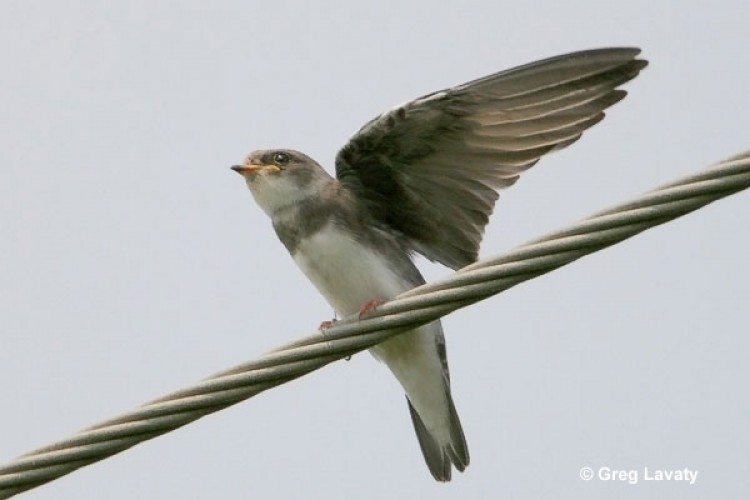
Another small species, the Bank Swallow, has a short, forked tail and a dark breast band on white underparts.
Frequently Asked Questions
What is special about Barn Swallows?
Barn Swallows are special because they act as natural pest control. These beneficial species eat lots of mosquitoes, flies, and other annoying or harmful bugs.
Are Barn Swallows good to have around?
Yes, Barn Swallows are good to have around because they eat lots of mosquitoes and flies, and are beautiful birds to watch.
Do Barn Swallows return to the same nest every year?
Yes, Many Barn Swallows return to the same nest and reuse it.
Why do Barn Swallows swoop at you?
Barn Swallows swoop at you because they catch insects you may have flushed out of hiding, or insects that hope to bite you. If you walk near their nest, they may also fly at you to scare you away.
Are Barn Swallows a pest?
No, Barn Swallows are beneficial birds. Although some people don’t like them to nest on or near their house, these birds do us big favors by feasting on mosquitoes and flies.

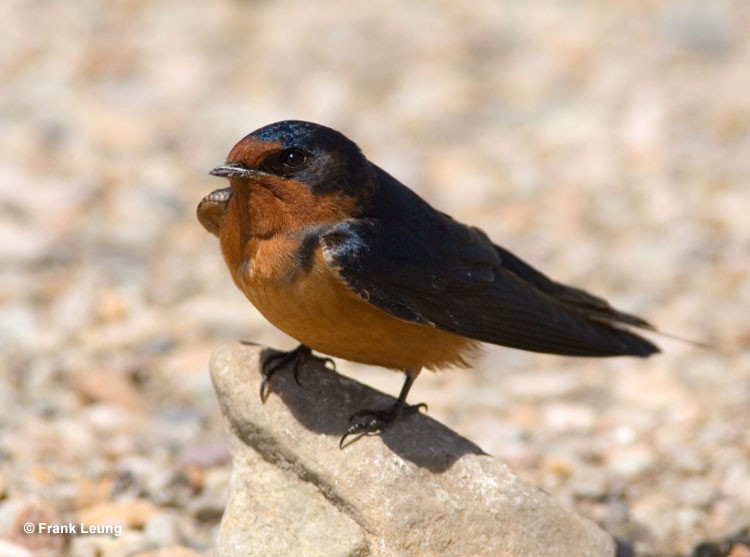

Susan
Wednesday 12th of April 2023
We've had barn swallows nest on our deck for several years. We've noticed that several weeks before the whole gang arrives, two or three come to check out the nesting site. Question: Do these early arrivals fly back to communicate with the family? In other words, do they make the migration twice?